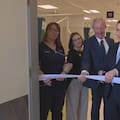Not all of the impending speed limit changes wanted in Nelson Tasman are in line with the Government’s new guidance — but the message from the region is that it shouldn’t matter.
The joint transport committee for the two councils approved its submission on the Government’s draft rule on the setting of speed limits on Tuesday.
Contained in the submission was a call for greater freedom for councils to set speed limits they thought were appropriate.
“A number of these rules essentially strip our council’s and our community’s ability to make decisions on the speeds that they want to see,” said Nelson’s deputy mayor Rohan O’Neill-Stevens.
“A lot of these questions are ones that, at least I believe, we should be asking and answering.”
The transport committee also recommended that the joint committee of all elected members from the Nelson and Tasman councils adopt the region’s amended speed management plan.
Although the amended plan won’t bring about the blanket speed limit reductions that were initially consulted on, it still allows for about 350 speed limit changes across the region, with most being slated for areas around schools, on narrow or winding unsealed roads, and on high-risk roads.
Most of these changes are supported by the guidance from the Government in its draft rule, but there are several other cases where the councils are looking to lower the speed limits in areas that are inconsistent with the rule’s contents.
Those inconsistencies are for rural residential roads that aren’t on the urban fringe, urban roads without footpaths, and rural sealed roads where there is an on-road section of the Great Taste Trail cycleway – one of the country’s Great Rides.
The committee’s submission on the plan explicitly called for those inconsistencies to be accommodated.
Tasman councillor Jo Ellis expressed concern that those inconsistencies would be rejected because they had been supported by the community and “make sense”.
“There's a reason that each one has been selected,” she said.
“We've chosen roads with communities that actually asked for these [speed limit reductions] to happen.”
Speed limit changes on those roads inconsistent with the guidance currently laid out in the Government’s draft rule will only be abandoned by the councils if the finalised rule doesn’t accommodate them, and if those changes are unable to achieve the approval of the Director of Land Transport.
The first speed limit changes are expected to be implemented from January 2025, with the changes around the region’s schools being completed by May 2026.
Local Democracy Reporting is local-body journalism co-funded by RNZ and NZ On Air.




















SHARE ME